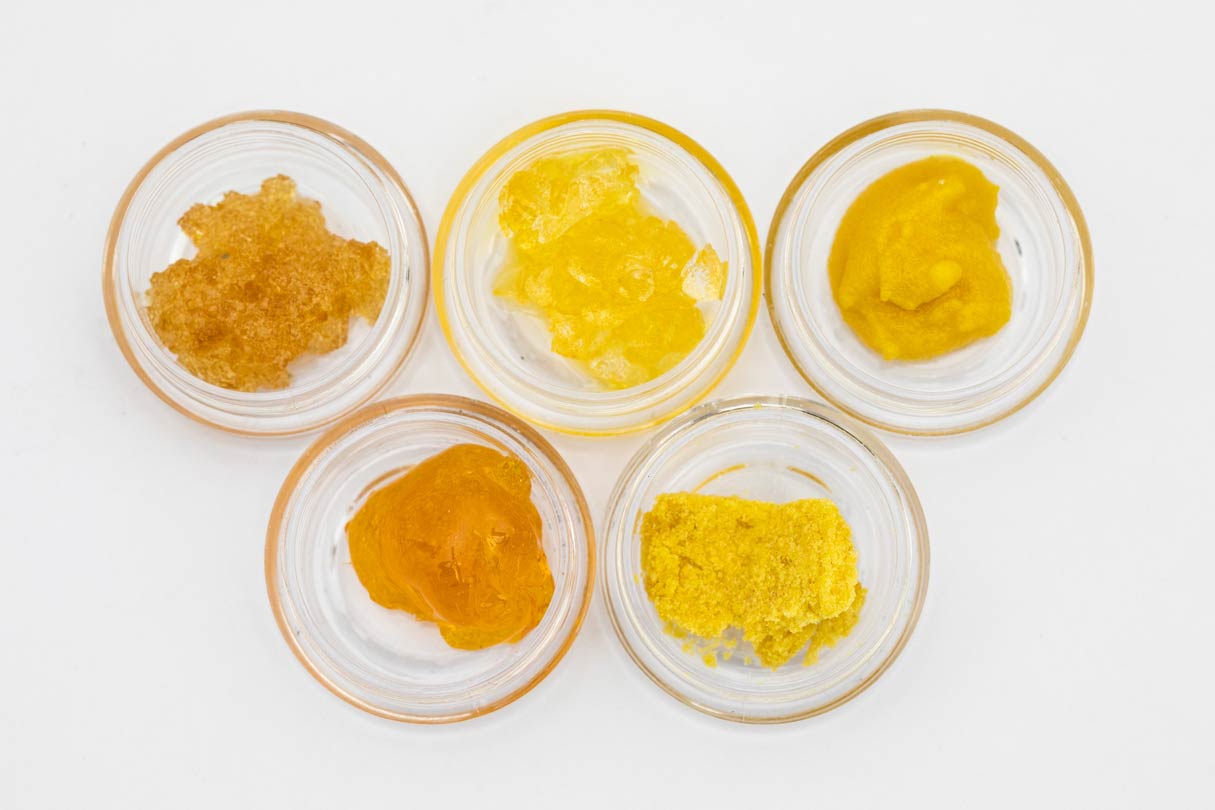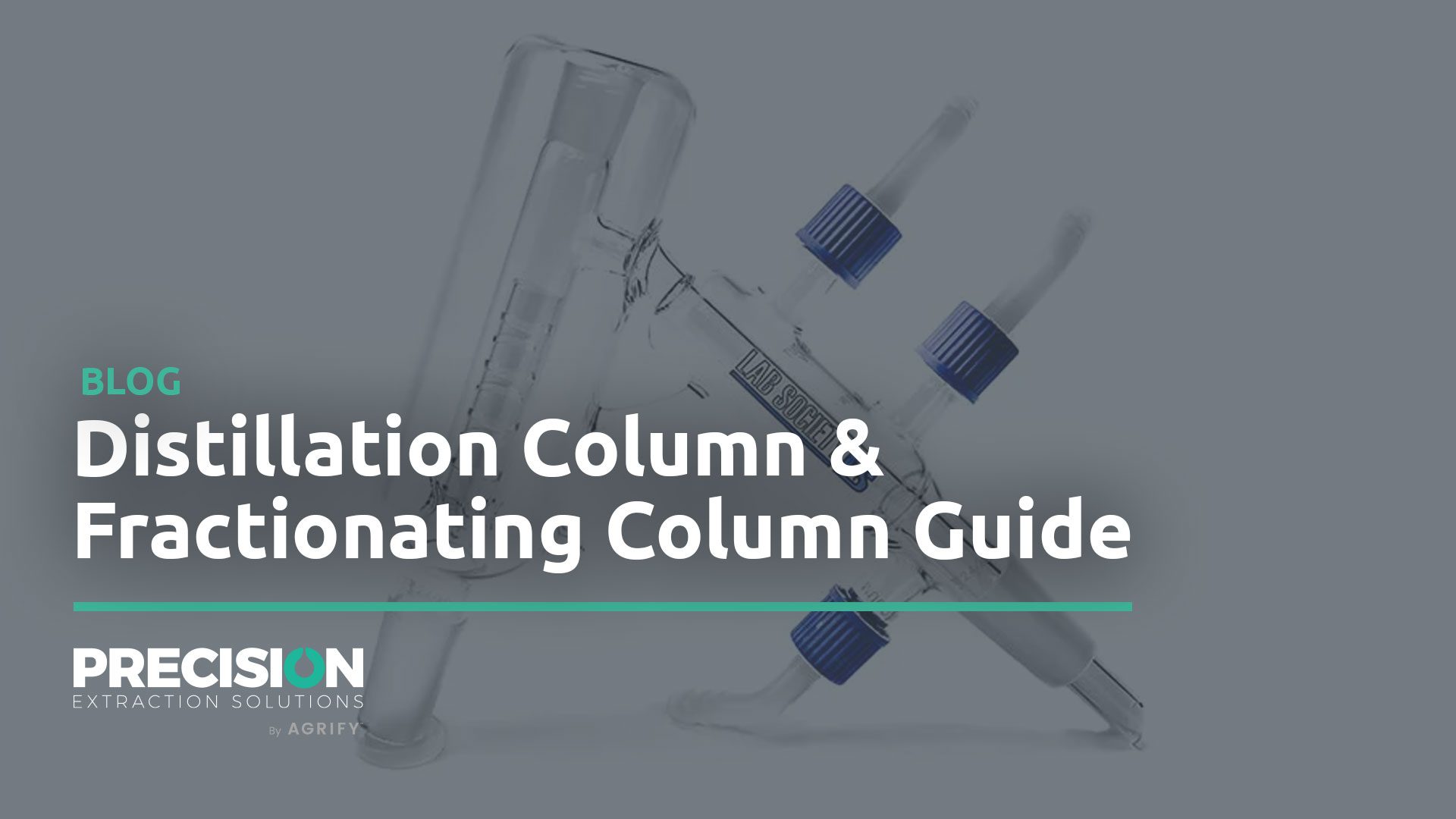There is no doubt that hemp-derived CBD is taking the world by storm. In 2021, Hemp Benchmarks detailed 195,000 registered acres of hemp in the country. Statista says that by the end of 2022, the US market alone will be $1.8 billion. It’s the transformation of hemp into CBD where the true value of this sector lies.
The industry gold standard is CBD isolate, an up to 99 percent pure extraction that originates from unprocessed hemp biomass. So how do you transform raw plant material into an isolated CBD product?
-
Step 1: Crude Oil Extraction from Biomass
The first step on your path toward making a CBD isolate is to extract the raw crude oil from the plant biomass. Conventionally, this means using solvents, such as butane, ethanol, or CO2, to pull out plant resins.
Crude oil is dark brown or green and contains the entire spectrum of phytochemicals produced in the plant, both valuable and not. Hemp plants, which technically fall under the cannabis sativa L. species, possess a rainbow of different compounds, including cannabinoids, terpenes, flavonoids, chlorophyll, and plant waxes. These are captured within the thick resinous crude oil.
-
Step 2: Winterization & Filtration
Once you have a rich crude concentrate, it’s time to strip it of fats and chlorophyll. These natural compounds give CBD oil unappealing flavor, color, and consistency. And while these substances may contain nutritional or medicinal properties, they are not valuable within edibles, vape pens, or other CBD consumer products.
Removing these compounds requires winterization. Exposure to cold temperatures forces the fats and other plant substances to thicken and separate from the concentrate. There are many techniques for achieving this, from cold baths using ice to complex mechanical operations.
-
Step 3: Solvent Recovery
At this stage, final solvent recovery is necessary to remove any of these compounds from the extraction. Solvents, while completely safe for use in a laboratory and during production, do need to be 100 percent removed from the product before it hits store shelves.
Typically, solvents are removed via a rotary evaporator. Rotary evaporators reduce the volume of a solvent by distributing and rotating it into a thin film across the interior of a vessel (spinning flask) at elevated temperatures under a vacuum.
Cascade supplies a range of solvent recovery options, including the high-throughput Heidolph Industrial Rotary Evaporator (20L model), which boasts an output of 13 liters an hour and a V5000 chiller bringing 200 additional watts of cooling capacity. Producers with especially high capacity needs may wish to pair it with the distimatic module so production can continue continuously (and unattended) overnight.
-
Step 4: Decarboxylation
Crude oil is rich in CBDa, not CBD. CBDa is an inactivated acidic form of CBD. Decarboxylation is the process of transforming CBDa into CBD with heat. While there are some presumed medicinal benefits to CBDa, the vast majority of the market demands CBD.
The process of decarboxylation, integral to the CBD extraction process, literally means removing the carboxylic acid and the CO2 from the molecular structure. This is done by heating the compound to a specific temperature.
Cascade’s line of Jacketed Decarb Reactors in 20L, 50L, and 100L models are state-of-the-art decarbing solutions designed to run high production volumes while at the same time maintaining exact temperature sensitivity.
-
Step 5: Distillation
Distillation is an age-old process used to separate essential oils from water. To get isolate CBD from decarboxylated crude oil, it must go through a distillation process.
The process of distilling CBD oils includes several steps. First, you load the crude oil into the distillation apparatus, preferably in a special container that can be drained at will. Then you will heat the oil by passing it over a spinning heated plate. From here, the crude oil is spun into a thin film by special wipers.
This process heats the crude oil enough to vaporize it and separate all its components. Finally, it is fed down into a cooling coil where it turns back into liquids, now separate. The CBD is then purified from the rest of the oil and collected separately. The terpenes and other compounds, known as “heads and tails,” are collected in another container.
Enter Cascade Sciences’ PUREPATH100 Distillation System, a 4″ wiped film distillation package optimized for viscous crude refinement. With top-quality components, including Agilent, Asahi, Heidolph, and Huber, this system is designed to reduce breakages and maintenance. Crude oil becomes high-quality distillate with only two runs through the PUREPATH100 system. The first run removes terpenes and other volatilities (heads), while the second distills the cannabinoids (body).
-
Step 6: Crystallization
A distilled CBD oil (CBD distillate) still contains impurities, at least if the end goal is a pure final product. CBD isolate, necessary for pharmaceutical-grade CBD isolates, comes from a process known as crystallization. While it will never be 100 percent CBD, crystallization can achieve upwards of 99.9 percent pure CBD.
Crystallization combines actions of heating and cooling to separate cannabinoids from terpenes. Crystals separate them from the rest of the solution (terpenes) and may be removed. On the cannabis side of the industry, crystallization creates THC diamonds (the crystals) and ‘sauce’ (the terpenes).
The same process holds for hemp-derived CBD. In their purely natural state, cannabinoids like CBD and THC crystalize, while terpenes remain more resinous and liquid. Pure CBD crystals form in highly controlled environments, using specific applications of pressure, heat, and motion.
Simplify the crystallization process with Cascades Hybrid Filter Reactor (20L and 50L options). It’s finally a cart-based, all-in-one reaction and filtration solution for isolate production. It promises rapid reaction times, as short as four to six hours, for maximum isolate output.
-
Step 7: Drying & Final Solvent Purge
The final step to creating a CBD isolate is by drying it with a vacuum oven. This serves two purposes. First, it evaporates any lingering moisture from the isolate, improving shelf life and stability. Second, it also serves to remove any lingering solvents and volatile impurities, which may have escaped an earlier refinement step.
Cascade’s Vacuum Drying Ovens feature exceptional temperature control as the probe is situated within the oven itself. The cold trap MAXTRAP105 (-105°C) will keep the vacuum pump running optimally and allow for the capture of outgassed material in the steel trap.
Plus, for operators, this model offers peace of mind as it comes equipped with a heating cutoff system that kicks in should the system hit unsafe temperatures. If you plan on processing overnight, or unattended, this feature is a required fail-safe.
Hemp CBD Isolate Requires Multi-Step Post-processing
Unlike crude hemp extraction, the post-processing required for pure pharmaceutical-grade CBD requires an extensive professional laboratory outfit.
Precision specializes in extraction and post-processing solutions for cannabis and hemp. Our extensive line of Cascade ovens offer a best-in-class solution for your processing needs.
Contact us today about your lab equipment needs for transforming crude oil into a value-added CBD isolate product.

CVO-5 Double Up Vacuum Package with MAXTRAP -105
The CVO-5 vacuum oven offers incredible temperature stability for vacuum drying and purging of pharmaceuticals, botanicals, slurries, or any temperature sensitive material. This vacuum oven will liberate solvents, water or other unwanted compounds in a small batch, R&D, laboratory environments.








